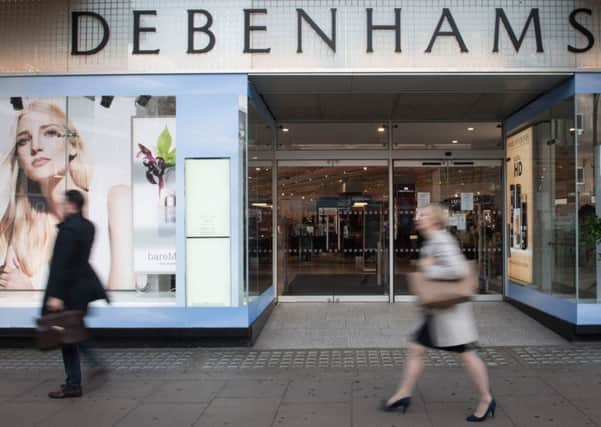Edinburgh sees 68 shop closures as the high street faces ‘enormous challenges’


A study by finance experts PwC said there had been a total of 68 shop closures in the Capital during 2018 and 36 openings.
Across the country, shops closed at a rate of more than five a week, with the number of stores in eight Scottish cities and towns falling by 119. Some 265 closures were offset by 146 new store openings.
Advertisement
Hide AdAdvertisement
Hide AdThe figures were released as news broke that Debenhams had gone into administration and is now under the control of its lenders. The move followed the board’s rejection of an offer from Sports Direct tycoon Mike Ashley of a £200 million rescue for the troubled department store chain on condition he was made chief executive.
The firm’s 166 stores are expected to continue trading as normal for now, although 50 of them are already earmarked for closure.
PwC said the 119 shop closures in 2018 represented a reduction on the record net loss of 148 in 2017. Scotland was the only one of 11 nations and regions in Great Britain to see a drop in net closures in 2018. But Mark Addley, head of business recovery services for PwC in Scotland, said store openings were at almost half the total seen five years ago.
Glasgow also saw a net loss of 32 shops – 89 closures against 57 openings; in Aberdeen, 42 closures and 15 openings left a net loss of 27; and in Dundee there were 22 closures and 17 openings, resulting in a net loss of five.
Advertisement
Hide AdAdvertisement
Hide AdMr Addley said: “There remain enormous challenges across our high streets.
“We have already seen casualties in 2019 and we fully expect to see more, with retail companies facing an uphill battle to survive, never mind thrive.
“From business failures to store closures and company voluntary arrangements (CVAs), we continue to see the impact of a high street in a state of change.
“With consumers continuing to migrate to online shopping there is a need for a societal conversation on the role of the high street and how retailers and landlords can best service this.
Advertisement
Hide AdAdvertisement
Hide Ad“The high street of the future will not be solely dependent on traditional stores. Across Great Britain we are seeing a growth in the numbers of gyms and ice cream parlours, for example. We need more of this new way of thinking.”
Across the UK, PwC said types of business which had previously seen a growth in outlets – such as coffee shops, food-to-go, takeaways, jewellers and beauty shops – had all seen a net decline in 2018 due to overcapacity and economic conditions.
Instead the biggest growth area was in the roll-out of gyms, with bookshops, ice cream parlours and cake shops also on the rise.
Among those to see the biggest decline were fashion and electrical retailers, restaurants and pubs.